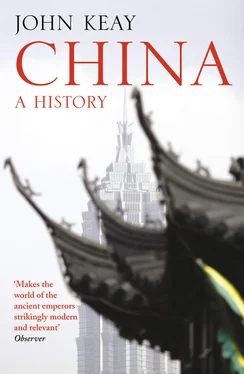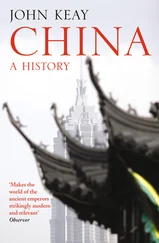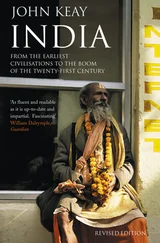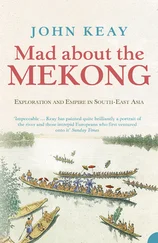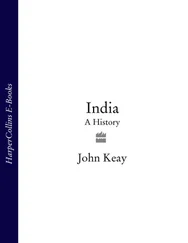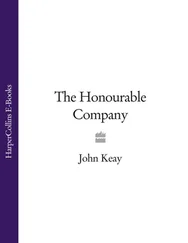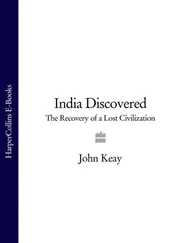Rivers and mountains provide a better guide to settlement patterns, although the neat North American sequence of prairie, desert, mountain and coast is not to be found. Most of China’s rivers run west to east, from the high and dry uplands of Qinghai and Xizang to the moister plains towards the coast. Between the Huang He (Yellow River) in the north and the Yangzi in the middle, two rivers, the Han, a major tributary of the latter, and the Huai, whose course has sometimes been borrowed by the former, observe the same eastward trend. So do rivers to the south of the Yangzi, such as those that come together in Guangxi and Guangdong to form the Pearl River estuary off which lies Hong Kong. All these rivers indulge in extravagant contortions, however. The Yangzi, once released by Xizang’s (Tibet’s) ramparts, zigs south towards Vietnam before zagging north back to Sichuan; the Yellow River performs a near-somersault as it arcs towards Mongolia and back.
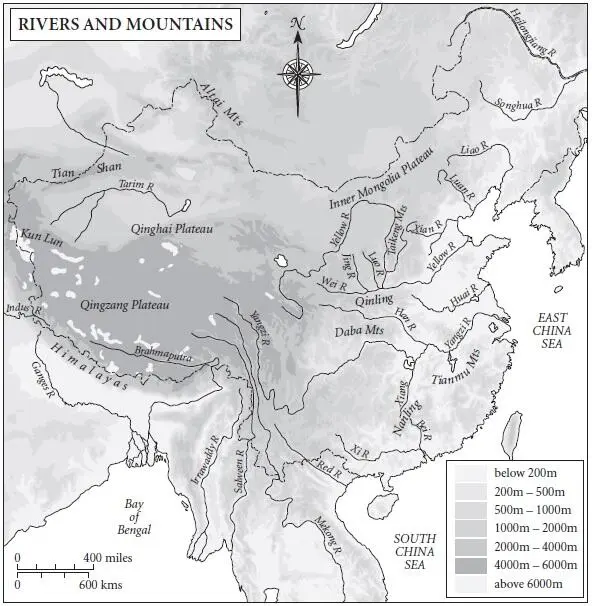
For such acrobatics, China’s cavalcade of mountains is responsible. As well as the much-photographed karst stacks of the south, the Himalayan giants, the gaunt Pamirs and the shy Tian Shan, numerous less-celebrated ranges corrugate large parts of the country and offer an important corrective to the notion that all those rivers eventually compose themselves to water lush coastal plains. With a few exceptions, such as the Yangzi delta, China’s coast is in fact quite rugged. So are all of its southern provinces. Conversely Sichuan, though riven by mountains of its own and located far inland above the Yangzi gorges, contains some of China’s most fertile plains and is today the fourth most populous of its provinces.
While the geography of China’s history could be broken down in numerous ways, there is no such range of options in respect of its chronology. The passage of time, like the spread of space, was carefully studied in ancient China and meticulously ordered. The history of India has scarcely a single unchallenged date prior to the ninth century AD, but China’s history yields dates, verifiable by eclipses, that go back to the ninth century BC; and not just year-dates but also the month, the day and sometimes even the hour may be given. Adjusting clock and calendar to synchronise with the diurnal, planetary and astral cycles was essential to cosmic harmony and so a major preoccupation of all Chinese rulers. History literally told the time; dates, in the form of reign-years, ticked away the minutes, dynasties tolled the hours. A periodisation based on the succession of dynasties has thus invariably been the preferred way of breaking down the long sweep of Chinese history.
The establishment of a dynasty, whose rulers would reign by right of birth and who would care for the tombs and reputation of their founder and his successors, was the ambition of every would-be sovereign, whether pretender, usurper or invader. Even rebellious peasant leaders often assumed imperial rank. Over the course of Chinese history the number of self-declared dynasties must exceed a hundred. But only dozens actually, partly or temporarily realised this ambition; and of these, only a few were favoured by the historians with recognition as part of China’s ‘legitimate’ dynastic succession.
The criteria for inclusion in this august company were not consistent. Until 221 BC dynasties consisted of kings, and only thereafter of emperors. No royal dynasties and few imperial dynasties exercised uncontested sway. Even some of the ‘legitimate’ imperial dynasties controlled only half, or less, of what at the time was regarded as China; they might therefore coincide with another ‘legitimate’ dynasty in the other half of the country. Nevertheless, a single ‘legitimate’ dynasty at any one time was the general rule, and while far-ruling and long-lived dynasties, preferably of distinguished indigenous origin, could expect to be included in the ‘legitimate’ succession, local, short-lived dynasties of foreign or undistinguished origin could only hope for inclusion.
A succession of twenty or so ‘legitimate’ dynasties – not to mention the hundred or so individual dynasts of which they are composed – is still an indigestible mouthful; and it is made more so by some dynasties adopting the same name as that of others whose lustre they claimed to be reviving. In the case of such clones, it is usual to add a geographical determinant ( Eastern Zhou, Northern Wei, etc.) or a sequential one ( Former Han, also known as Western Han, or Later Han, also known as Eastern Han).
Mercifully some dynasties acquired a semi-permanency and soldiered on for centuries, winning a reputation for administrative integration, military endeavour, political stablility, cultural distinction and personal magnificence. The five imperial dynasties that lasted longest – each for three to four centuries – constitute the great plateaux of Chinese history and are well worth memorising. Cross-reference to contemporary empires elsewhere may help. They are:
HAN (Former and Later), 202 BC–AD 220, coeval with the Roman republic and early empire
TANG, 618–907, coeval with the expansion of Arab empire
SONG (Northern and Southern), 960–1279, coeval with the Crusades
MING, 1368–1644, coeval with the early Ottoman and Mughal empires
QING (or Manchu), 1644–1912, coeval with Europe’s global expansion.
Many other dynasties of note will be encountered. Ironically the one that most nearly approached the Chinese imperial boast of ruling ‘All under Heaven’ was not Chinese at all but Mongol. This was the Yuan dynasty (1279–1368), under one of whose emperors the Venetian Marco Polo supposedly found employ.
Some dynasties lasted only a decade or two and, achieving little, will scarcely merit mention. Others, though short-lived, changed the whole course of Chinese history. Such a dynasty was the Qin (221–206 BC). Its founder was the first to impose a fragile unity on the whole of ‘core’ China and the first to assume the title of huangdi , or ‘emperor’. In fact he is known to history simply by this title – Qin Shi Huangdi, or the Qin ‘First Emperor’. Like near-identical bookends, the Qin, the first imperial dynasty and one of the shortest, is matched at the other end of the chronological shelf by the Qing, the last imperial dynasty and one of the longest.
Had all subsequent emperors followed Qin Shi Huangdi’s excellent example of being known by a numbered reign – First, Second, Third Emperor, etc. – much confusion would have been avoided. Unfortunately no such custom developed. Although emperors and kings of the same name often occur, they are never distinguished by a number, like Louis I–XVIII or the English Georges, only by name. Nor is there much consistency about which of an emperor’s several names is the one that history has chosen to remember him by. Personal names being too personal for an emperor, the choice lay between the various auspicious titular names assumed during and after his lifetime. For some dynasties it is customary to call individual emperors by their temple names; for others it is their posthumous names which are used: and in the case of the Ming and Qing dynasties, names adopted for their various reign periods have been extended to the emperors themselves. Hence the seeming anomaly of a Qing emperor, such as the long-reigning one (1735–95) whose temple name was Gaozong, being known to history as ‘the Qianlong emperor’, that is ‘the Qianlong period emperor’. Just calling him ‘Emperor Qianlong’ would be like calling Mao Zedong ‘Chairman Great-Leap-Forward’.
Читать дальше
